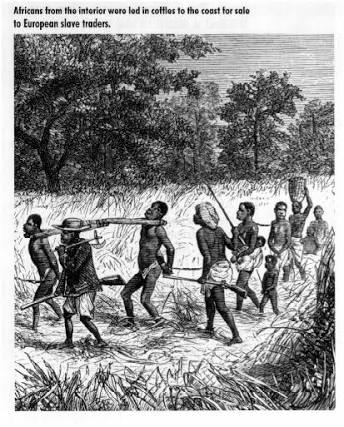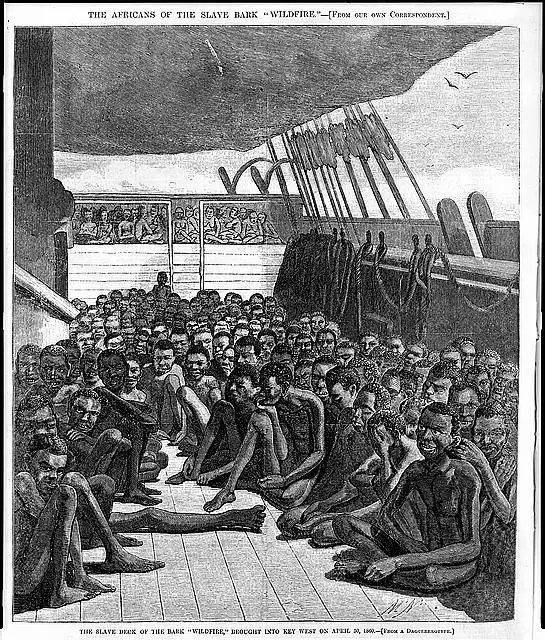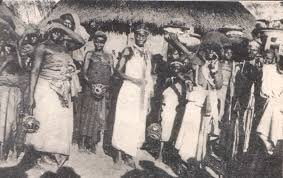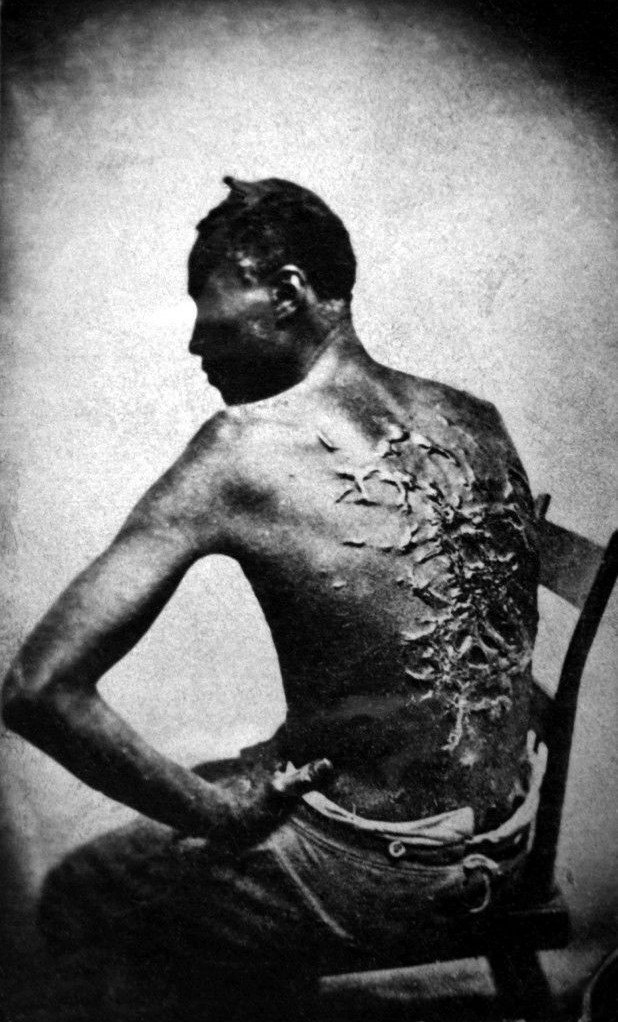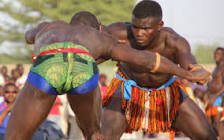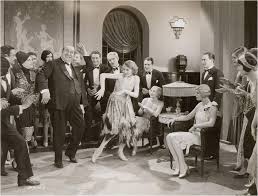HISTORY -- With Nzekwe Gerald Uchenna
THE STORY OF CANDIDO DA ROCHA (1860 – 1959) --
The Life and Times Of A Yoruba Man Born Into Slavery In Brazil and became Nigeria's First Billionaire
Nigeria has always been Blessed with people of immensely wealth and fame.
THE STORY OF CANDIDO DA ROCHA (1860 – 1959) --
The Life and Times Of A Yoruba Man Born Into Slavery In Brazil and became Nigeria's First Billionaire
Nigeria has always been Blessed with people of immensely wealth and fame.

History has it that Nigerians have been Engaging in money-spinning enterprises since 19th century.
It is not difficult to imagine that today's richest man in Africa, Aliko Dangote, wakes up in Africa,has his breakfast in Asia, lunch in UK, dinner in USA and sleeps in Australia.
It is not difficult to imagine that today's richest man in Africa, Aliko Dangote, wakes up in Africa,has his breakfast in Asia, lunch in UK, dinner in USA and sleeps in Australia.
You may also imagine the richest woman on the continent, Folorunso Alakija, attending a conference in North America, meeting with Female Entrepreneurs in UK, signing a Multimillion-dollar deal in South America, going shopping in Asia, and attending a wedding party in Antarctica.
The duo may be the richest man and woman on the continent today, but Nigeria’s ability to create billionaires did not start today.
Before MKO Abiola, Dangote and Alakija, there was Candido Esan Da Rocha who was known for his fame and fortune.
Before MKO Abiola, Dangote and Alakija, there was Candido Esan Da Rocha who was known for his fame and fortune.

Infact, History has it that, he was the first Richest Black man not only in Nigeria, but Probably also all of Africa.
Although, Candido Esan Da Rocha's Family were Brazilian Slaves who returned back to Nigeria, just like the Oladeinde Antonio Fernadez's family.
Although, Candido Esan Da Rocha's Family were Brazilian Slaves who returned back to Nigeria, just like the Oladeinde Antonio Fernadez's family.
Story has it that, upon Candido's Fathrr, Joao Esan Da Rocha's return to Nigeria with his family, he made a fortune that has today become the subject of fact and fiction.
Let's take a look at Candido Esan Da Rocha's life.
Let's take a look at Candido Esan Da Rocha's life.
But first, Let's look at the influence of the Retuned Slaves known as Saros and Amaros in Lagos and Nigeria in 18th Century :
Lagos-Portuguese connection rather than the Anglo Saxon one need not be surprising given that Lagos is named after a small port in the Algarve.
Lagos-Portuguese connection rather than the Anglo Saxon one need not be surprising given that Lagos is named after a small port in the Algarve.

And, if such anachronisms as saying an African site was discovered by someone other than an African is permissible then the dubious credit goes to one Lancelot de Freitas in 1450, with respect to Lagos. Of course, Lagos had been settled by Aworis and Edo people from much earlier. 

The names of the islands, Eko (field) and Ikoyi (warriors’ camp) say something about the original occupants.
The Yoruba wars of the 1800s in which the Ekiti Parapo (Ekiti & Ijesha confederacy) was pitted against the Ibadan resulted in many prisoners of war and other captives ...
The Yoruba wars of the 1800s in which the Ekiti Parapo (Ekiti & Ijesha confederacy) was pitted against the Ibadan resulted in many prisoners of war and other captives ...

being sold into slavery.
At this time, trade with the English speaking New World had ended but Portuguese ships continued to ply the Atlantic and to trade in the Black Gold. Hence many Yoruba or Nago as they were often termed ended up in Brazil, particularly in Salvador Bahia.
At this time, trade with the English speaking New World had ended but Portuguese ships continued to ply the Atlantic and to trade in the Black Gold. Hence many Yoruba or Nago as they were often termed ended up in Brazil, particularly in Salvador Bahia.

Joao Esan da Rocha was an example, an Ijesha with feet also in the New World.
However, the The Returnee Slaves of Seira Leon and Brazil Soon took Over Lagos :
After the Abolishing of Slave Trades, Returnee Slaves to Nigeria were known as Saros Or Creoles.
However, the The Returnee Slaves of Seira Leon and Brazil Soon took Over Lagos :
After the Abolishing of Slave Trades, Returnee Slaves to Nigeria were known as Saros Or Creoles.
Saros or Creoles in Nigeria during the 19th century and early twentieth century were freed slaves who migrated to Nigeria in the beginning of the 1830s.They were known locally as saros (elided form of Sierra Leone, from the Yoruba sàró) or Amaros: migrants from Brazil and Cuba.
Saros and Amaros also settled in other West African countries such as the Gold Coast (Ghana). They were mostly freed and repatriated slaves from various West African and Latin American countries such as Sierra Leone, Brazil and Cuba.
Liberated "returnee" Africans from Brazil were more commonly known as "Agudas", from the word àgùdà in the Yoruba language.
Most of the Latin American returnees or Amaros started migrating to Africa after slavery was abolished on the continent while others from West Africa,...
Most of the Latin American returnees or Amaros started migrating to Africa after slavery was abolished on the continent while others from West Africa,...
or the Saros were recaptured and freed slaves already resident in Sierra Leone. Many of the returnees chose to return to Nigeria for cultural, missionary and economic reasons. Many (majority) of them were originally descended from the Yoruba of western and central Nigeria. 
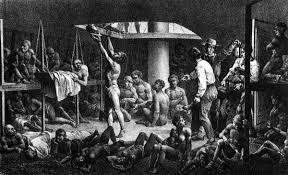
Other Nigerian groups forming part of the Sierra Leonean Krio population included Efik, Igbos, Hausa & Nupe.
The returnees mostly resided in the Lagos Colony,With substantial populations in Abeokuta and Ibadan.Some also settled in Calabar,PH and other cities in the Niger Delta.
The returnees mostly resided in the Lagos Colony,With substantial populations in Abeokuta and Ibadan.Some also settled in Calabar,PH and other cities in the Niger Delta.
Though, many were originally dedicated Anglophiles in Nigeria, they later adopted an indigenous and patriotic attitude on Nigerian affairs due to a rise in discrimination in the 1880s, and were later known as cultural nationalist.
Saros -Life in Sierra Leone:
While living in Sierra Leone,many Creole residents became exposed to the Christian faith as a result of the work of British missionaries who established some Churches,a few grammar schools and a pioneer educational institution,the Fourah Bay College.
While living in Sierra Leone,many Creole residents became exposed to the Christian faith as a result of the work of British missionaries who established some Churches,a few grammar schools and a pioneer educational institution,the Fourah Bay College.

Relatively, the residents of Sierra Leone soon gained a fast start in Western education and were soon well trained in medicine, law & the civil service.
Many of them graduated from grammar schools and became administrative workers for the British imperial interest in the country.
Many of them graduated from grammar schools and became administrative workers for the British imperial interest in the country.
By the middle of the nineteenth century some of the African literati in Sierra Leone began to migrate to Nigeria, especially the colony of Lagos for economic reasons and some were administrative personnel who were reassigned to Lagos.
An expedition of the river Niger by Ajayi Crowther furthered the evangelical interest of many Sierra Leoneans on Nigeria, many of whom had grown to be accessories of the missionaries and their effort.
Life in Lagos and Abeokuta for the Aworis :
Lagos was a strategic and important fishing location for the original founders, the Aworis.
It was established as a fishing community by Awori immigrants in the sixteenth century.
Lagos was a strategic and important fishing location for the original founders, the Aworis.
It was established as a fishing community by Awori immigrants in the sixteenth century.
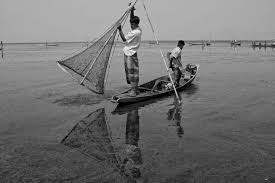
The town later emerged as major economic base nurtured by immigration from nearby ethnic groups led by the Ijebus, then the Ijaws, the Binis, and the Egbas.
Trade with Europeans also fueled the commercial rise of the city.
Trade with Europeans also fueled the commercial rise of the city.
By 1880, Lagos had already become a cosmopolitan city. Sierra Leonean immigrants started moving to Lagos in the 1840s.
Many of the immigrants were of Egba and Oyo heritage and some were familiar with Yoruba traditions and culture.
Many of the immigrants were of Egba and Oyo heritage and some were familiar with Yoruba traditions and culture.
In Lagos, the Saros chose Ebute Metta, Olowogbowo, and Yaba as primary settlements.
While the Original Settlers of Lagos,the Aworis were comfortable settling at river edges (Not main lands).
While the Original Settlers of Lagos,the Aworis were comfortable settling at river edges (Not main lands).

The Saros mostly of Egba heritage established a few of the oldest churches in Lagos and also expanded the missionary work of the British in Nigeria. The Saros also emerged as a dominant commercial group in Lagos. Having developed a migratory forte,...
they had an edge as travelers who were able to go into the interiors to meet directly with producers and traders. They were the pioneer Southern Nigerian traders in Kola nuts, a cash crop that later emerged as important export commodity for the Western region in the 20thCentury.
The Saros introduced the crop which was bought from Hausa traders across the River Niger into Southern Nigeria agriculture. The first Kola nut farm and the dominant trader in Kola nut business, Mohammed Shitta Bey, were orchestrated by Saros.
They also did not drop their yearning for western education as they dominated the ranks of professions open to Africans. They were lawyers, doctors, and civil servants.
Skirmishes in western Nigeria :
Early on, the Saros who had acquired Western education and European cultural mores during their time in Sierra Leone, began to show paternal characteristics in their relationship with native residents of Lagos.
Early on, the Saros who had acquired Western education and European cultural mores during their time in Sierra Leone, began to show paternal characteristics in their relationship with native residents of Lagos.

The perceived disrespect extended to some Lagos citizens led to the Saros being expelled from Lagos in the 1850s, although they soon returned. In 1867, another conflict emerged, this time it was in Abeokuta.
The conflict was between the Egbas and the Europeans.
The conflict was between the Egbas and the Europeans.
The Egbas were protesting the increasing influence of western culture and a land encroachment led by the Lagos governor, Glover.
The Egbas decided to go on rampage and damaged European symbols such as churches and missions,..
The Egbas decided to go on rampage and damaged European symbols such as churches and missions,..
a few Saros were also expelled from Egbaland, but like the case of Lagos, calm was quickly restored.
Prior to the conflict, a few notable Saros, such as Henry Townsend played prominent roles as advisers to the council of chiefs in Abeokuta.
Prior to the conflict, a few notable Saros, such as Henry Townsend played prominent roles as advisers to the council of chiefs in Abeokuta.
Saros Life in the delta :
The Niger delta was a little bit dissimilar to Lagos and western Nigeria where the Yorubas were dominant. Lagos was much more cosmopolitan while the delta was composed of different and varied ethnic groups of equal political footing.
The Niger delta was a little bit dissimilar to Lagos and western Nigeria where the Yorubas were dominant. Lagos was much more cosmopolitan while the delta was composed of different and varied ethnic groups of equal political footing.
There were also few historical attributes that would foster cultural assimilation. However, the immigrants soon found a home in a few cities especially in the new city of Port Harcourt. Port Harcourt was founded by British authorities in 1913 as a coastal center ....
for the export of Palm oil and coal. A number of immigrants from Yorubaland, the Hausa states, Gambia and Sierra Leone soon came to the city to work. Some of the Saros were clergymen and others were transferred for administrative duty.
The Saros emerged in the city as pioneers of African commerce as they became suppliers to the residents of the new city.
However, life in Port Harcourt was rough for many Saros. Some came to the city as workers for British merchant houses and the colonial government.
However, life in Port Harcourt was rough for many Saros. Some came to the city as workers for British merchant houses and the colonial government.
However, there was no job security afforded the immigrants in the new city. Some Saro workers were retired without pension and suffered much financial deprivation. The retired Saros asked to return home, and some were transported back with the help of colonial funds.
The lack of promotion and retirement faced by immigrant Africans was partly as a result of a systemic wall against promotion of Saros and Africans by the British. The Saros in Lagos, Port Harcourt and Abeokuta had earned the irritation of Europeans because of the achievement ...
of a few immigrants who were clergy.
This policy led to a gradual change among Saros especially those in the West. The idealistic revolt against the British was led by a missionary James Johnson who decried excessive British interference in the affairs of the missionary society.
This policy led to a gradual change among Saros especially those in the West. The idealistic revolt against the British was led by a missionary James Johnson who decried excessive British interference in the affairs of the missionary society.
'THE RETURNEE BRAZILLIAN AMAROS IN LAGOS' :
Unlike the Saros who were principally from Sierra Leone, the Amaros, who were sometimes called Nago in Brazil (Nago indicates Yoruba ethnicity), were liberated slaves from Brazil and Cuba.
Unlike the Saros who were principally from Sierra Leone, the Amaros, who were sometimes called Nago in Brazil (Nago indicates Yoruba ethnicity), were liberated slaves from Brazil and Cuba.

Returnees from Brazil and Cuba and their current-day descendants were and are more commonly called "Agudas".
They went to the New World as slaves from different sub-ethnic and ethnic backgrounds but approached relationships among themselves as equals.
They went to the New World as slaves from different sub-ethnic and ethnic backgrounds but approached relationships among themselves as equals.
They came back to Nigeria, principally, to re-connect with their fatherland.
In Lagos, their neighborhood became known as Popo Aguda, Brazilian quarter (This is were we call Pako Aduda in Surulere)
In Lagos, their neighborhood became known as Popo Aguda, Brazilian quarter (This is were we call Pako Aduda in Surulere)
The Amaros were not brought up in the Anglican faith like the Sierra Leoneans, but Catholicism, the dominant religion in Brazil and Cuba.
By the 1880s, the Agudas comprised about 9% of the population of Lagos. Some of the Agudas were also Muslims.
By the 1880s, the Agudas comprised about 9% of the population of Lagos. Some of the Agudas were also Muslims.

Some of the Catholic Brazilians and Cubans also worshipped the African Orishas they had also worshipped in Brazil and Cuba.
These Amaros gave Portuguese and Spanish names in Nigeria.
The Brazilian returnees were notably technically skilled artisans and were known for ...
These Amaros gave Portuguese and Spanish names in Nigeria.
The Brazilian returnees were notably technically skilled artisans and were known for ...
the distinctive Brazilian architecture built in their settlements and later in the Lagos environs. During this time, modern European architecture was not only meant to be a nice abode but also a dominating advertisement to show Africans of a different style and culture. 

However, in due time, the Brazilian style emerged as a viable alternative and modern style used by African contractors working on public and large private jobs such as the Holy Cross Cathedral in Lagos and the Mohammed Shitta Bey Mosque. 

The Brazilians introduced to Nigeria elaborate architectural designs, two-story buildings and bungalows with stucco facades.
The Brazilian returnees also popularized the use of Cassava as a food crop. They had pioneered trade with Brazil in the mid nineteenth century.
The Brazilian returnees also popularized the use of Cassava as a food crop. They had pioneered trade with Brazil in the mid nineteenth century.
But by the 1880s, ruinous competitors and an economic downturn had forced many to abandon the export trade. Agriculture soon became an avenue to supplement shortfalls in economic activity. They also introduced cocoa plantations together with the Saro, J.P.L. Davies.
To imagine the astonishing influence of Afro Brazilians in Lagos and the counterpoint influence of the Yoruba in Bahia yet the astounding caesura in the dialogue, is as wide as the Atlantic Ocean itself!
CANDIDO ESAN DA ROCHA :
Towards the late 1871, a large number of freed slaves from Brazil known as the Brazilian returnees sailed into Nigeria on what became their final homecoming. This returnees were known as Agudas.
Towards the late 1871, a large number of freed slaves from Brazil known as the Brazilian returnees sailed into Nigeria on what became their final homecoming. This returnees were known as Agudas.

In the midst of this group was Candido Da Rocha's father, Joao Esan da Rocha and his family.
Candido's father, Joao Esan da Rocha was abducted as a child in 1850 and was sold into slavery in Salvador, Bahia Brazil.
He returned to Lagos in the 1870s.
Candido's father, Joao Esan da Rocha was abducted as a child in 1850 and was sold into slavery in Salvador, Bahia Brazil.
He returned to Lagos in the 1870s.

Some members of the Returnee groups were the Sho-Silvas, da Silvas, Fernadez, Dacostas, Lopezes, Gomezes. Agustos, Domingos, Pereiras, Evaristos, Cardosos, Pedros among many others.
But somehow, Joan Esan da Rocha seems to be the most widely known name of all.
But somehow, Joan Esan da Rocha seems to be the most widely known name of all.
Joao Esan da Rocha who was of Ilesa extraction on his return to Lagos became a successful businessman who owned two houses, one at 4, Tinubu Street, presently the site of Mr. Biggs (UAC) and the other later to become known as “Water House” at Kakawa Street both in Lagos Island. 
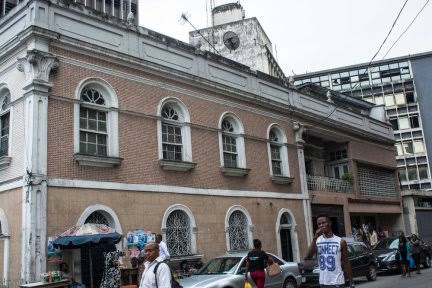
According to Pierre Verger, in his book “Trade Relations between the Bight of Benin and Bahia – 17th to 19th century’ many ‘Brazilians’ were retail traders. Payne’s Lagos and West African Almanac and Diary for 1881, listed the name of Joao da Rocha as ‘Trader of Kakawa Street.
And A.B. Loatan, in his book Stated that “Senior Joao Esan Rocha (was) a prosperous merchant perhaps the richest of his time…”
his native name was ‘Esan’ he was baptized in Brazil as ‘Joao’ (meaning in English John) and his surname ‘Rocha’ was the name of his Portuguese master.
his native name was ‘Esan’ he was baptized in Brazil as ‘Joao’ (meaning in English John) and his surname ‘Rocha’ was the name of his Portuguese master.
Joao Esan Da Rocha was probably a young man of about 30 years when he returned to Lagos in 1873 with his family.
By then, The total population of the Emancipados (freed slaves) at the time was 1, 237, according to Governor C. A. Moloney of Lagos.
By then, The total population of the Emancipados (freed slaves) at the time was 1, 237, according to Governor C. A. Moloney of Lagos.
Candido’s Da Rocha's mother was ‘Mamae’ Senhora Angelica Josephine Louisa da Rocha, She was the daughter of Papae Ogaga – Martins, whose family compound was at Bamgbose Street, Lagos, Island.
She too was also a native of Ilesha, Osun State.
She too was also a native of Ilesha, Osun State.
Candido da Rocha lost his mother on May 7, 1885, when he was just 19 years old.
while his father died on December 31, 1891, in Lagos, when he was aged 25 years.
while his father died on December 31, 1891, in Lagos, when he was aged 25 years.
Candido Da Rocha's Family :
Candido’s father and wife Louisa Angelica Noqueira da Rocha, both were blessed with four children.
Candido Da Rocha was the first born, having been born in Bahia, Northern Brazil on the 3rd of October, 1866.
Candido’s father and wife Louisa Angelica Noqueira da Rocha, both were blessed with four children.
Candido Da Rocha was the first born, having been born in Bahia, Northern Brazil on the 3rd of October, 1866.

As a young boy of seven years when he arrived Lagos in 1873, Candido could only speak Portuguese and Ijesha – dialect of Yoruba. It is not known whether he attended any school in Brazil before he arrived Lagos. 

His other siblings were Joanna da Rocha who never got married but died in 1941.
The third was Moses who was born in Lagos in 1876 and qualified as a medical doctor in 1896 from Edinburgh, Scotland,specializing in tropical medicine and one of the earliest trained Nigerian doctors
The third was Moses who was born in Lagos in 1876 and qualified as a medical doctor in 1896 from Edinburgh, Scotland,specializing in tropical medicine and one of the earliest trained Nigerian doctors
Candido Da Roche Education :
Candido da Rocha was very brilliant.
He began his education with enrolment at the Saint Xavier Catholic Primary School presently known as Holy Cross Catholic Primary School on Catholic Mission School on Catholic Mission Street, Lagos Island.
Candido da Rocha was very brilliant.
He began his education with enrolment at the Saint Xavier Catholic Primary School presently known as Holy Cross Catholic Primary School on Catholic Mission School on Catholic Mission Street, Lagos Island.

He had his secondary school education at the popular CMS Grammar School, Bariga, Lagos.
He, according to records available was never beaten and always came first in his class. At the time he was leaving CMS, he became the school’s Head Boy.
He, according to records available was never beaten and always came first in his class. At the time he was leaving CMS, he became the school’s Head Boy.
His classmates at the school were the late Bishop Oluwole, late Herbert Macaulay, and S. H. Pearse who once owned the old Elephant House on Board Street, It was later pulled down for redevelopment following a fire incident. The building is now owned by the Shonibare family. 

Another account gave a contrary view concerning his intellectual endowment. According to this account, Candido da Rocha made no pretension to intellectual pursuit in his early days. In his last days,however,it was stated that he was a voracious reader of newspapers and magazines.
It was also claimed that he had a good stock of books in his library, where classical English books and works of great novelists adorned his shelves.
It was equally said that he read Charles Dickens and Oliver Goldsmith, besides books on history and exploration of Africa.
It was equally said that he read Charles Dickens and Oliver Goldsmith, besides books on history and exploration of Africa.
After leaving school at the age of 16years, Candido da Rocha never wanted to work as a clerk as it was common in those days. He went to work with a German firm on Lagos Island where he learnt the rudiments of the export and import business.
In 1903, his name appeared on the Lagos Colony Jury List as having served in a previous year. Thus at the age of 25 years, Candido da Rocha had attained maturity, capable of fending for himself.
Lagos Weekly Record of 11th December, 1893 published on the Island,featured a public notice signed by Candido da Rocha, where he applied for letters of administration for his father’s estate,who died intestate at his residence at Water House in Kakawa Street on December 31, 1891.
In other words, Candido da Rocha stepped into his father’s business empire, which he later expanded and consolidated into a multi-million pound financial empire, straddling agriculture, hotel, trading, real estate, banking and financial investment.
How Candido Da Rocha Became a Billion Through Gold Business:
An English gold prospector approached da Rocha one early morning.
As he went about perfecting the skills of the trade, providence also played a major role.
An English gold prospector approached da Rocha one early morning.
As he went about perfecting the skills of the trade, providence also played a major role.

In what was to eventually mark the beginning of his fortunes, an English gold prospector who wanted to travel back to England approached da Rocha one early morning in 1894 with bars of gold that he had mined and wanted to dispose off.
The Englishman also had two other Lagos merchants in mind apart from da Rocha.
One of them was the late S. H. Pearse, a classmate of da Rocha at C. M. S.
And as mother luck would have it, the Englishman chose da Rocha of the three.
One of them was the late S. H. Pearse, a classmate of da Rocha at C. M. S.
And as mother luck would have it, the Englishman chose da Rocha of the three.
But there was a problem of funds as he never had all the money the man wanted. The Englishman wanted 6,000 pounds. So, Candido da Rocha approached the Bank of West-Africa now known as First Bank. 

The bank 'First Bank' was originally registered as Bank of West-Africa and later Standard Bank before assuming its present name.
The bank lent Candido da Rocha the money with which he funded the purchase of the gold bars.
The bank lent Candido da Rocha the money with which he funded the purchase of the gold bars.
He filed the gold bars into gold dust and sold on retail to the local gold smiths.
He made on average,a whopping 200% profit on the sales which is worth billions of naira in todays money.
It was unheard of if not unthinkable at that time for an African to make that kind of money.
He made on average,a whopping 200% profit on the sales which is worth billions of naira in todays money.
It was unheard of if not unthinkable at that time for an African to make that kind of money.
Love for Horse Races:
At the age of 24 in 1891, he became one of the founders of the Lagos Race Club and had sufficient funds to maintain champion racehorses.b
He kept stables for horses at his Lagos Island Kakawa residence. His horses participated in and won several races.
At the age of 24 in 1891, he became one of the founders of the Lagos Race Club and had sufficient funds to maintain champion racehorses.b
He kept stables for horses at his Lagos Island Kakawa residence. His horses participated in and won several races.
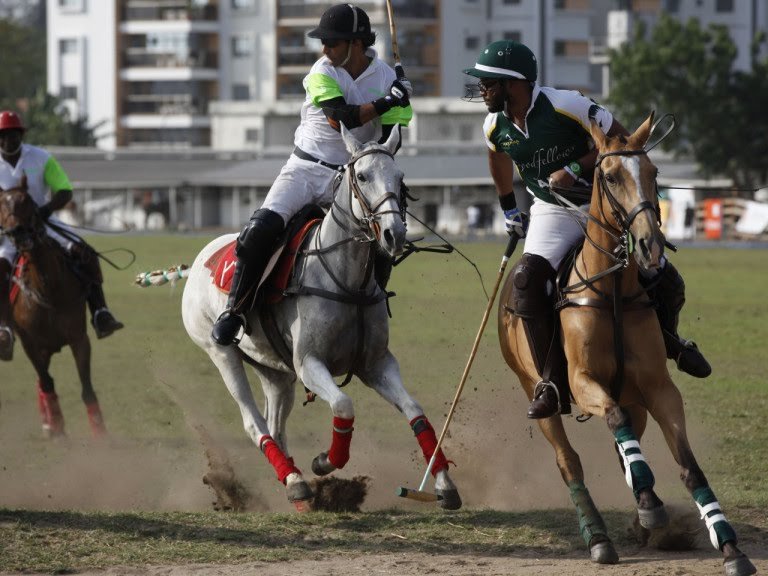
Everything he founded brought him money.
Candido da Rocha was said to have a midas touch. If for instance, 10 horses were lined up for sale,he always picks the champion.He had the best known race horse at the time called Vampa which won several races from sprint to long distance.
Candido da Rocha was said to have a midas touch. If for instance, 10 horses were lined up for sale,he always picks the champion.He had the best known race horse at the time called Vampa which won several races from sprint to long distance.
He imported glass beads and horse tag like harnesses for horses, beeps and long horsewhips.
Candido Da Rocha’s knack for spotting champion horses, information reveals could be compared to that of the legendary Agakhan, a rich man who brought almost all champion horses.
Candido Da Rocha’s knack for spotting champion horses, information reveals could be compared to that of the legendary Agakhan, a rich man who brought almost all champion horses.
Candido Da Rocha Founded Lagos Native Bank :
Candido Da Rocha later went into the banking business.
he was the first African to own a bank called Lagos Native Bank which was established in 1907.
Candido Da Rocha later went into the banking business.
he was the first African to own a bank called Lagos Native Bank which was established in 1907.
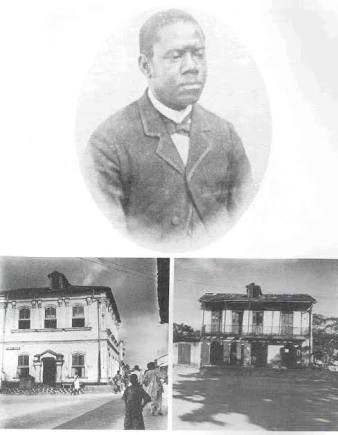
He went into a partnership with, J. H. Doherty and Sedu Williams, to establish the Lagos Native Bank
But,ran the bank himself – he was the founder, sole owner and sole operator and competed with the Bank of West-Africa and probably the old Barclays Dominion, Colonial & Overseas.
But,ran the bank himself – he was the founder, sole owner and sole operator and competed with the Bank of West-Africa and probably the old Barclays Dominion, Colonial & Overseas.
The Lagos Native Bank did not last long as Candido da Rocha reportedly fell into the hands of “419’ fraudsters and was discouraged from continuing.
His Bank was Scammed of a very huge sum of amount at that time.
His Bank was Scammed of a very huge sum of amount at that time.
Following the painful experience, he went into financing and established what was called the Lagos Finance Company. He lent money out to people and also invested heavily in properties.
He was said to have as part of his properties on the Island, 37 Marina, now site of Unity House and 72 Campbell Street now host to Cappa and D’alberto.
There were many others along Broad Street and Customs Street. Some of these include the present site of Shell House and Chanrai.
There were many others along Broad Street and Customs Street. Some of these include the present site of Shell House and Chanrai.

All his properties were given Brazilian names like Perseveranza, Constaranza, Finanza and many more like that.
The present site of the Central Bank on Customs Street originally belonged to Candido da Rocha.
The present site of the Central Bank on Customs Street originally belonged to Candido da Rocha.

He bought 55 hectares of land in Agege area where he had his hunting ground and built a country home. It was originally a farmland which he bought in 1926 and hired to tenant – farmers. He went there from time to time to recreate away from his “Water House” residence.
He invested in hotels as early as 1900. At the age of 34 years, he had acquired a property at Tinubu Square in Lagos, near Ilojo Bar, which he turned into a restaurant cum hotel, known as “Restaurant da Rocha’ where, according to a newspaper advertisement :
'excellent cuisine and wines, visitors will find many advantages of by staying at this quiet, home-like and comfortable hotel, the terms for which are as follows: rooms furnished – from 4 shillings to 6 shillings a night.
Table de hot dinner at 4 shillings per head per diem, if sufficient inducement is offered. EL Arte Cigars, Will’s cigarettes and Tobacco, Dry Monopol Ayata and other champagnes, darets, liquers, Benedictine and Chartreuse, whisky, brandy,...
mineral water is supplied on premises at reasonable rates. Private rooms for dinner parties, dancing parties, raffles and games available at moderate charges.
"Rickshaws [equivalent of car hire], without boy, at 5 shillings a ride or 50 shillings per month. For further particulars apply to Candido da Rocha, Proprietor,’
the announcement stated.
the announcement stated.
Candido Da Rocha into Water Business :
Candido lived at Water House at Kakawa, built by his Father Joao Esan Rocha, famously called Casa d’Agua or water house.
The home was commemorated in literature by a novel, The Water House, written by Antonio Olinto.
Candido lived at Water House at Kakawa, built by his Father Joao Esan Rocha, famously called Casa d’Agua or water house.
The home was commemorated in literature by a novel, The Water House, written by Antonio Olinto.
The house had a borehole and the first water fountain in Lagos Island; and had piped water borne water to his residence from Iju to Lagos Island. and sold the water from his house to consumers for profit to Lagosians
Candido Da Rocha Dry Cleans his Clothes in America :
Candido Da Rocha was so rich that he had dozens of clothes and he could afford to send his dirty clothes to the laundryman in the United Kingdom – which he did for many years
And Candido da Rocha drives the best Cart vehicle.
Candido Da Rocha was so rich that he had dozens of clothes and he could afford to send his dirty clothes to the laundryman in the United Kingdom – which he did for many years
And Candido da Rocha drives the best Cart vehicle.

Candido Da Rocha's Political Engagement:
Shrewd and forthright, the first Nigerian millionaire was not given to unnecessary platitudes and politicking.
Due to his wealth, his friend, Herbert Macaulay, nominated him as a candidate in one of the elections of the time.
Shrewd and forthright, the first Nigerian millionaire was not given to unnecessary platitudes and politicking.
Due to his wealth, his friend, Herbert Macaulay, nominated him as a candidate in one of the elections of the time.

And when da Rocha met the electorate, he told them: “I am Candido da Rocha, your candidate into the House. Vote for me if you like. And if you don’t, all well and good.” That statement ended his sojourn in politics as he lost the elections with acquiring just 20 votes.
Indeed, da Rocha was a very modest and generous capitalist.
During the Second World War (1939 – 1945), when the authorities of Kings College were looking for a place to relocate the students in the boarding house – among whom were Tiamiyu Bello-Osagie,...
During the Second World War (1939 – 1945), when the authorities of Kings College were looking for a place to relocate the students in the boarding house – among whom were Tiamiyu Bello-Osagie,...
who would become one of Nigeria’s most celebrated gynaecologists; Adenekan Ademola, son of Nigeria’s first indigenous Chief Justice, Adetokunbo Ademola; Dapo Aderemi, son of Sir Adesoji Aderemi, the legendary Onni of Ile-Ife –
da Rocha volunteered his Bonanza Hotel on Customs Street, Lagos, and did not collect a dime for the period it was used.
Even after the war, when government asked influential Nigerians to contribute to the rehabilitations fund, he made substantial donations ....
Even after the war, when government asked influential Nigerians to contribute to the rehabilitations fund, he made substantial donations ....
and he instructed that the amount should not be disclosed to the public.
Candido Da Rocha was also a founding member of the Lagos auxiliary to the Anti Slavery and Aborigines Right Society which was headed by James Johnson and had Samuel Pearse and Sapara Williams as members.
Candido Da Rocha was also a founding member of the Lagos auxiliary to the Anti Slavery and Aborigines Right Society which was headed by James Johnson and had Samuel Pearse and Sapara Williams as members.
Problems with Family life:
Research revealed that Candido da Rocha may have had problems with family life.
He lived alone most of his adult life and was never formally married to any woman whether traditionally,In the court or in the church even though he was a strong Catholic.
Research revealed that Candido da Rocha may have had problems with family life.
He lived alone most of his adult life and was never formally married to any woman whether traditionally,In the court or in the church even though he was a strong Catholic.

He was a very difficult man to live with,” said Dr. Oladele da Rocha – Afodu, his grandson who lived with him from age 12.
Three women were known to have had children for him and lived with him briefly.
Three women were known to have had children for him and lived with him briefly.
One of the women was originally from the old Gold Coast now Ghana who had his first child and only son called Alexander Candido da Rocha.
The da Rocha family is well entrenched in Ghana.
The second woman who had a son for him died at an early age.
The da Rocha family is well entrenched in Ghana.
The second woman who had a son for him died at an early age.
Thereafter, he had four daughters; three of these were born by the same woman and one daughter, Mrs. Enitan Salako, from another woman.
The daughters, three in all include Louissa Ebun Turton,
the second daughter was called Angelica Folashade who later became Mrs. Thomas.
The daughters, three in all include Louissa Ebun Turton,
the second daughter was called Angelica Folashade who later became Mrs. Thomas.
The third and last of da Rocha’s children named Candida died at the age of 96 six years ago.
In 1920, Candido da Rocha reportedly fell out with his only son, Alexander.
It was not exactly known what led to the estrangement between father and son.
In 1920, Candido da Rocha reportedly fell out with his only son, Alexander.
It was not exactly known what led to the estrangement between father and son.
Whatever the cause, Candido da Rocha was said to have been too pained to the extent that he never made up with his son till he died.
Family sources confirmed that Alexander was not mentioned in his will.
Following the estrangement,Alexander went to live with his mother in Ghana.
Family sources confirmed that Alexander was not mentioned in his will.
Following the estrangement,Alexander went to live with his mother in Ghana.
After about 37 years sojourn in Ghana, Alexander came back on a visit to Lagos and was accompanied by a close family friend of the Candido da Rocha to see his father; da Rocha declined to see his son.
“Even though nobody could lay claim to what my uncle did to papa,..
“Even though nobody could lay claim to what my uncle did to papa,..
the general conclusion was that he must have caused papa great pain. Every little thing meant so much to him. A mere photograph skewed a little to the side in the process of being hung on the wall could attract a very serious reprimand. For instance, if one of his birds died,..
he must be told how many were left.
Any person in charge of the birds upkeep, must by papa’s standard know all the species of birds he had” said Dr. da Rocha–Afodu.
Any person in charge of the birds upkeep, must by papa’s standard know all the species of birds he had” said Dr. da Rocha–Afodu.
Regarding Candido da Rocha's Generosity :
Describing Da Rocha’s generosity, his 90 year Old Granddaughter said, “People would come to him, crying, requesting financial assistance; from the balcony, asking how much they needed, he would throw down the money to them.
Describing Da Rocha’s generosity, his 90 year Old Granddaughter said, “People would come to him, crying, requesting financial assistance; from the balcony, asking how much they needed, he would throw down the money to them.

Candido Esan Da Rocha's Death :
Candido Esan Da Rocha died in 1959 and is buried at Ikoyi Cemetery.
He died as the first Billionaire in Nigeria and African.
Among his children were Alexander Da Rocha,
Adenike Afodu,
Angelica Folashade Thomas,
and Louissa Turton.
Candido Esan Da Rocha died in 1959 and is buried at Ikoyi Cemetery.
He died as the first Billionaire in Nigeria and African.
Among his children were Alexander Da Rocha,
Adenike Afodu,
Angelica Folashade Thomas,
and Louissa Turton.
CONCLUSION :
There is absolutely No contention on Candido da Rocha being the first Billionaire in Nigeria. Even the Colonial records confirms it.
After him was then Alhaji Alhassan Dantata, of the Dantata Dynasty.
Then, Sir Louis Philip Ojukwu, Chief Timothy Adeola Odutola etc
There is absolutely No contention on Candido da Rocha being the first Billionaire in Nigeria. Even the Colonial records confirms it.
After him was then Alhaji Alhassan Dantata, of the Dantata Dynasty.
Then, Sir Louis Philip Ojukwu, Chief Timothy Adeola Odutola etc
We have treated the stories of this great men.
Eg Alhaji Alhassan Dantata and how he built the Dantata Dynasty (Even paved the way for Aliko Dangote)
Sir Louis Philip Odumegwu Ojukwu Story.
etc.
You can check them out on my TL.
Eg Alhaji Alhassan Dantata and how he built the Dantata Dynasty (Even paved the way for Aliko Dangote)
Sir Louis Philip Odumegwu Ojukwu Story.
etc.
You can check them out on my TL.
THE END
Sources : NGU Library Collection, Taiwo Ojoye, Punch Newspapers, femi oyebode,
Senator Femi Ojudu, Island News, Wikipedia,
#Nzekwe Gerald Uchenna (NGU)
#MovementForTheEmancipationOfNigerianYouths(MENY)
Sources : NGU Library Collection, Taiwo Ojoye, Punch Newspapers, femi oyebode,
Senator Femi Ojudu, Island News, Wikipedia,
#Nzekwe Gerald Uchenna (NGU)
#MovementForTheEmancipationOfNigerianYouths(MENY)
• • •
Missing some Tweet in this thread? You can try to
force a refresh




